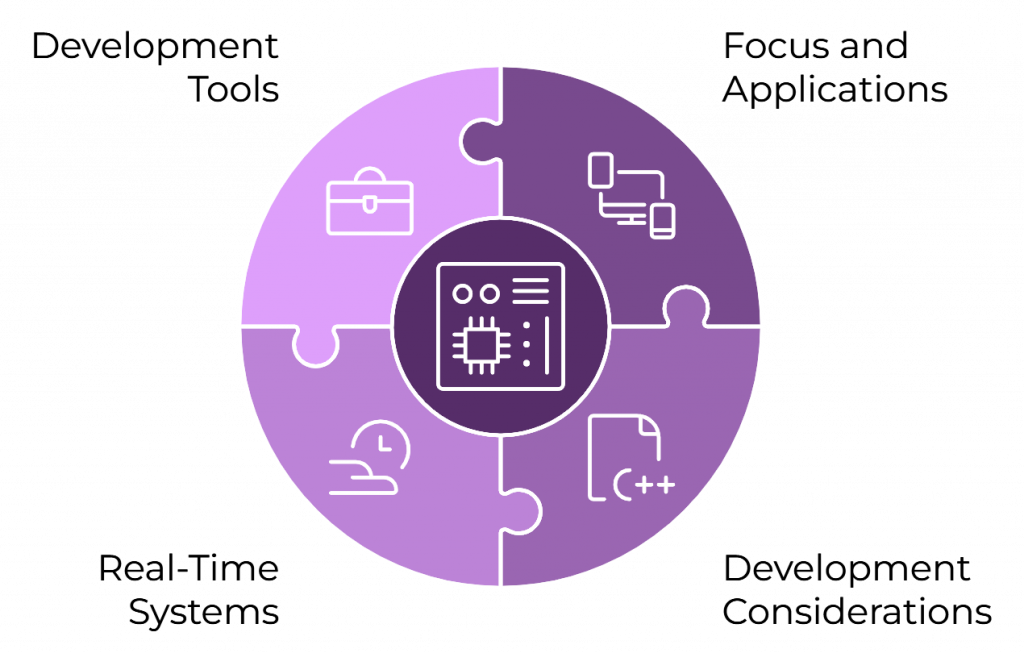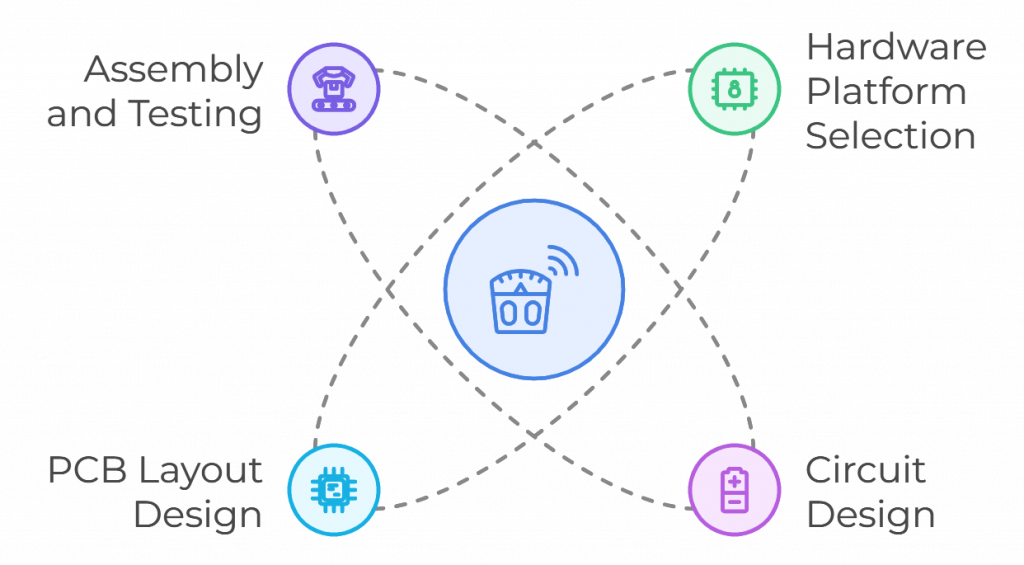Imagine a world where every device you use is not just smart but intuitively responsive, seamlessly integrating cutting-edge software with its hardware core. That’s the power of embedded software development – the hidden force behind today’s tech innovations. Businesses leveraging embedded software aren’t just enhancing products; they’re reshaping industries, driving growth, and staying steps ahead of the competition.
Embedded software development is instrumental in enhancing the functionality of modern devices, seamlessly integrating sophisticated software with hardware to deliver superior performance. Businesses can harness this technology to improve product capabilities, introduce innovative features, and explore new revenue streams through enhanced services.
A significant advantage of embedded software lies in its capability to facilitate remote updates and upgrades, ensuring products remain up-to-date with minimal disruption. This flexibility is crucial for industries seeking to stay ahead in rapidly evolving markets and meet evolving customer expectations. Moreover, embedded systems generate valuable data that enables businesses to gain insights into usage patterns, customer preferences, and operational efficiencies. By using these insights, companies can encourage ongoing innovation, enhance decision-making, and stay competitive in their industries. By integrating embedded software development, businesses can effectively leverage technological advancements, improve customer experiences, and foster long-term growth.
What is Embedded Software Development?
Embedded software development involves creating software designed to operate on specialized devices known as embedded systems. These systems are specialized for particular tasks and generally operate within constraints like memory, processing power, and storage.
Key Aspects of Embedded Software Development
Focus and Applications
Embedded software controls specific functions within devices, such as sensors, actuators, displays, and communication with other devices. Examples include traffic light controllers, medical devices like pacemakers, anti-lock braking systems (ABS) in cars, smart thermostats, and wearable fitness trackers.
Development Considerations
Developers must optimize code due to the resource constraints of embedded systems. Commonly used programming languages include C and C++ for their ability to manage memory efficiently and interact closely with hardware. Beyond software, developers must consider the hardware platform and real-time constraints of the system.

Real-Time Systems
Many embedded systems require immediate response to events, termed real-time systems. Developers must ensure software meets strict timing requirements for correct system functionality.
Development Tools
Specific tools and environments are essential for embedded software development. These tools include compilers tailored to hardware architectures, debuggers for embedded systems, and simulators for testing software prior to deployment on actual devices.
Experion’s Approach
At Experion, our approach to Embedded Software Development is rooted in our dedication to delivering advanced solutions in IoT and Embedded Engineering. We specialize in offering thorough support across both hardware and embedded software development, ensuring that our solutions are not only technologically advanced but also designed for long-term sustainability.
Hardware Platform Selection: Our team excels in guiding the selection of hardware platforms tailored to meet the specific requirements of each project. This process involves comprehensive analysis and evaluation of factors such as performance needs, power consumption, connectivity options, and scalability. By selecting the most suitable platform, we ensure that our solutions are optimized for efficiency and future growth.
Circuit Design: We specialize in designing efficient and reliable circuits that are fundamental to the functionality and performance of embedded systems. Our approach involves meticulous planning and simulation to achieve optimal performance while ensuring reliability under varying operating conditions. This includes selecting appropriate components, considering thermal management, and adhering to design standards to meet industry specifications.

PCB Layout Design: Precision is key in crafting PCB layouts that facilitate optimal functionality and performance of electronic devices. Our team employs advanced design tools and techniques to meticulously place components, optimize signal integrity, minimize noise, and ensure thermal management. The layout design phase is crucial as it directly impacts manufacturing costs, assembly efficiency, and the overall reliability of the hardware product.
Assembly and Testing: We maintain strict adherence to assembly and testing procedures to ensure the quality and reliability of our hardware components. This process begins with meticulous component sourcing and procurement to ensure consistency and reliability. Our assembly techniques prioritize precision and reliability to meet design specifications. Post-assembly, comprehensive testing protocols are conducted, including functional tests, environmental tests (such as temperature and vibration testing), and reliability tests to validate performance and durability under real-world conditions.
Expertise in Embedded Software Development
We cater to a wide range of embedded systems, including:
Bare Metal Systems: Optimizing performance in resource-constrained environments.
- Linux-Based Systems: Harnessing the flexibility and power of Linux for embedded applications.
- RTOS-Based Systems: Implementing real-time operating systems to meet the demands of deterministic behavior in applications.
- Additional Services and Capabilities: Beyond development, we offer specialized services to support product lifecycle management:
- Sustenance Engineering: Analyzing existing products to align with new standards and protocols, ensuring longevity and relevance.
- Obsolescence Engineering: Redesigning products to overcome challenges posed by obsolete components, thereby extending product lifecycles effectively.
Future Focus
Experion is actively focusing on automotive-related projects, leveraging our strong capabilities. With targeted training initiatives, advanced tool adoption, and strategic partnerships, we are excelling in this strategic area. This proactive approach allows us to offer tailored solutions that align seamlessly with the requirements of automotive clients, demonstrating our readiness to meet industry demands.
Conclusion
Embedded Software Development is integral for optimizing device performance and reliability across diverse industries. From bare metal to Linux-based and RTOS-based systems, these solutions empower businesses to innovate and meet stringent operational demands. With continuous advancements and specialized engineering, businesses can enhance product capabilities, meet evolving market demands, and sustain long-term growth in a competitive landscape.
At Experion, we’re all about turning your wildest tech dreams into reality with our top-notch Embedded Software Development services. Whether you’re dreaming up the next-gen IoT gadget or need to fine-tune your embedded systems, we’ve got you covered. Our team of tech wizards is here to sprinkle some innovation magic and bring your ideas to life. Let’s collaborate and make something amazing together!

